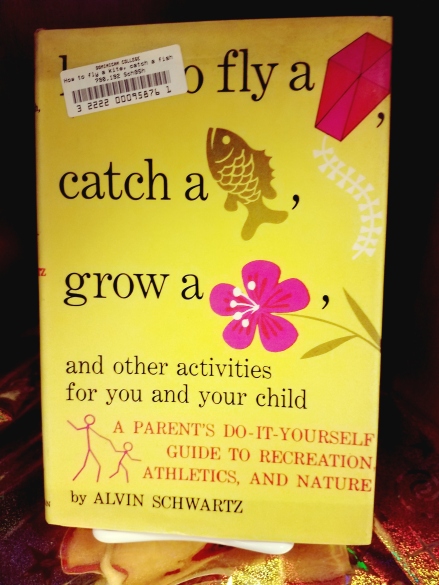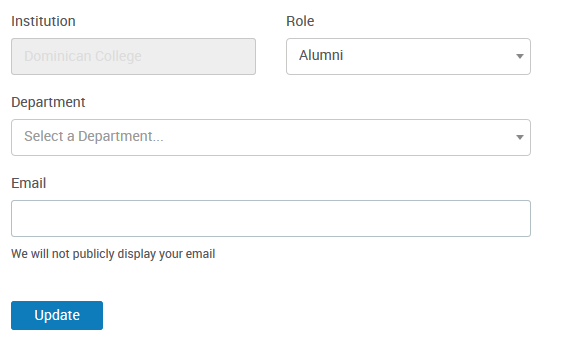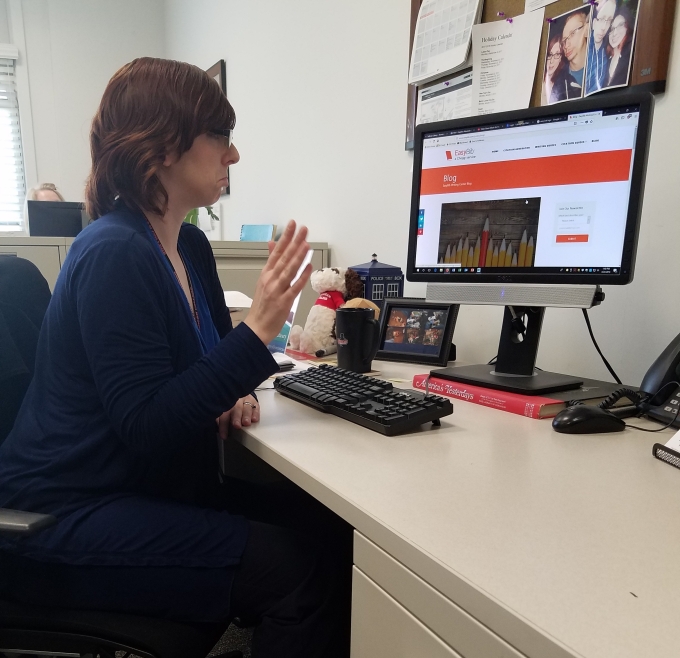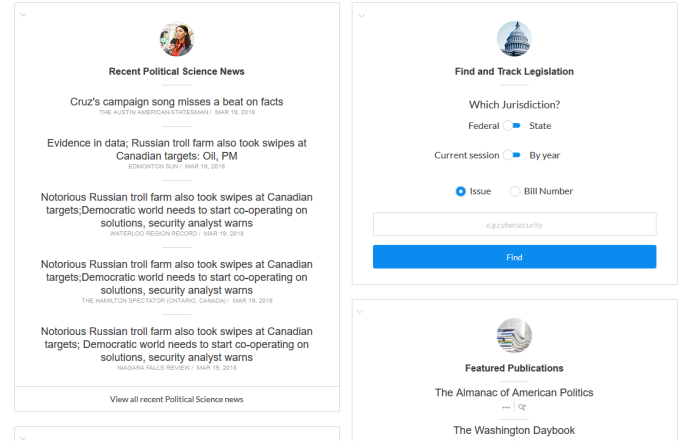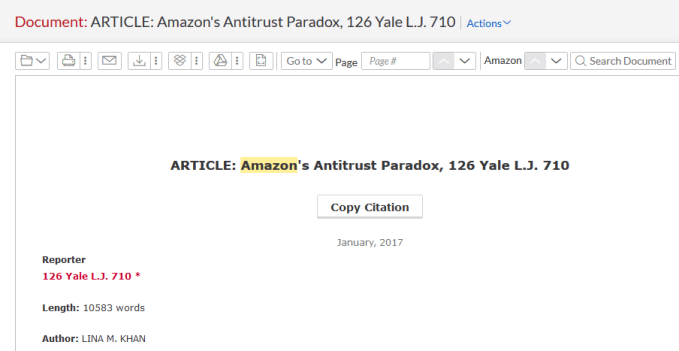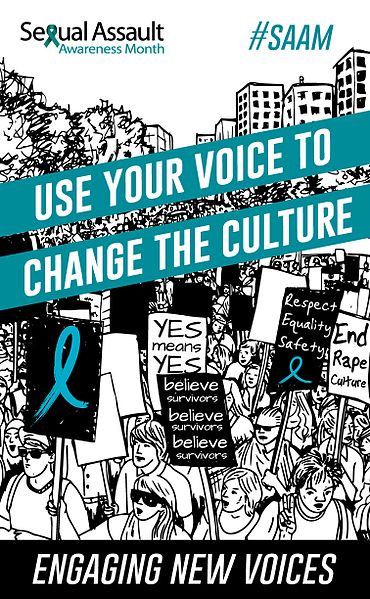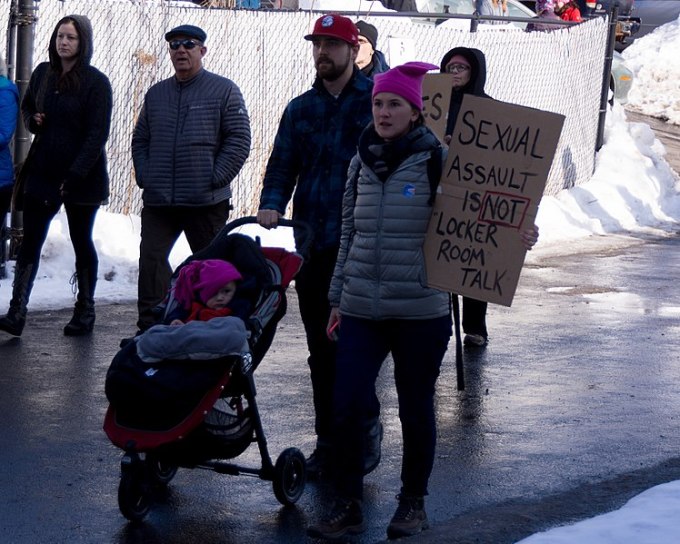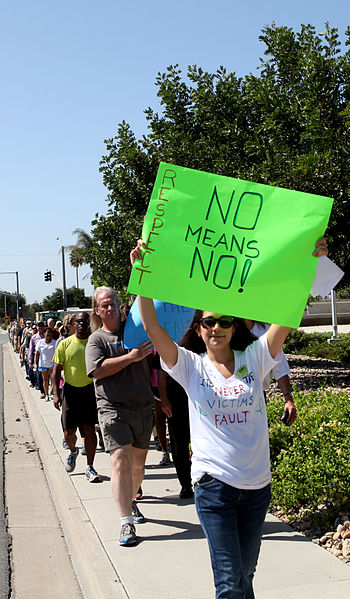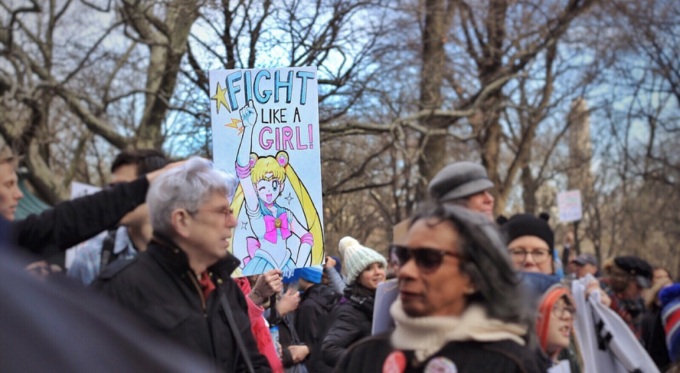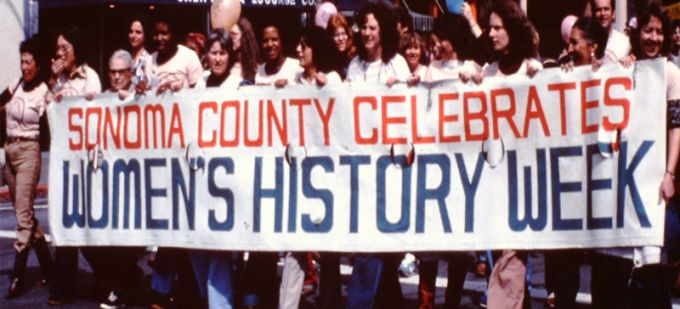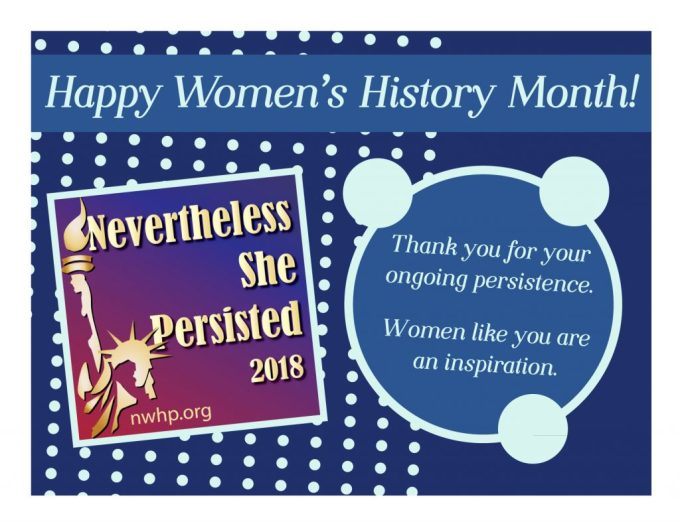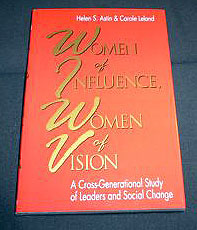Saint Joan of Arc, by-named the Maid of Orléans, was burned at the stake on May 30, 1431 for heresy; however, 25 years later the church nullified their verdict, and on May 16, 1920, nearly 500 years later, Joan was canonized to become a saint by the Roman Catholic Church.
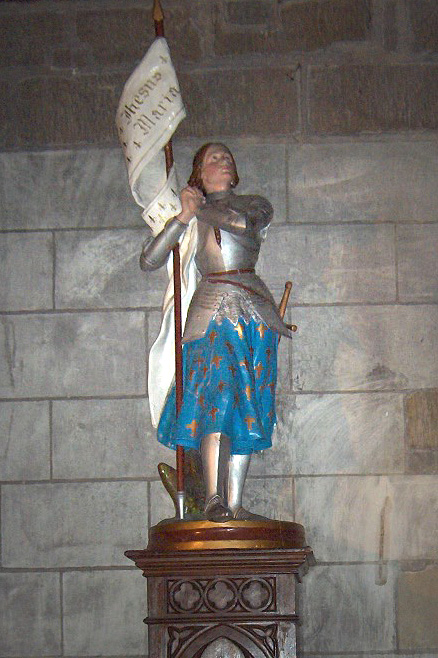
Statue of Joan in the Bayonne Cathedral; Photo from Wikimedia Commons, the free image repository.
Joan was born in 1412 by two peasants in the small village of Lorraine, southeast of Paris. She did not travel far, and spent most of her time tending animals on the farm or working beside her mother in completing other domestic duties, such as sewing.
Around the age of 12 or 13 she began hearing voices, that she swore were of divine origin, who ordered her to lead France to victory against the English in the Hundred Years War between France and England.
Over time, her visions persisted and grew in strength, eventually showing themselves as St. Catherine or St. Michael. Despite Joan’s lack of military experience, as well as her social standing and gender, her visions asserted that she was piously chosen to be the savior of France.
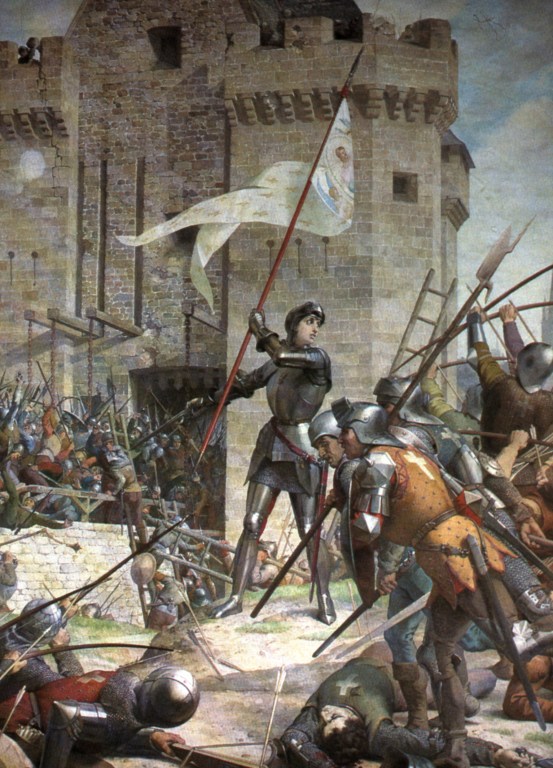
Jeanne d’Arc at the Siege of Orléans by Jules Eugène Lenepveu, painted 1886–1890; Photo from Wikimedia Commons, the free image repository.
In May 1428, Joan’s visions instructed her to travel to Vaucouleurs and contact Robert de Baudricourt, who was a military commander and a supporter of Charles. Initially, Baudricourt refused Joan’s request to see Charles, but after noticing that she had gained the approval of villagers, he relented, and in 1429 Baudricourt gave Joan a horse and an escort of several soldiers to accompany her on the journey to Charles’s court.
Joan cropped her hair and dressed in men’s clothes for her 11-day journey, which was a bold move in relation to the laws of the church. Charles’s initial impression of Joan was uncertain, but he eventually agreed to her requests to lead an army after many attempts to persuade him, including correctly identifying him, dressed incognito, in a crowd of members of his court.

Joan of Arc depicted on horseback in an illustration from a 1505 manuscript; Image from Wikimedia Commons, the free media repository.
Finally, Charles gave Joan of Arc armor and a horse, and allowed her to accompany the army to Orléans, the site of an English siege. In a series of battles between May 4 and May 7, 1429, the French troops took control of the English fortifications under Joan’s authoritative command.
Although it appeared that Charles had accepted Joan’s mission, he did not display full trust in her judgement or advice. After the victory at Orléans, she kept encouraging him to hurry to Reims to be crowned king, but he and his advisors were more cautious.
Nevertheless, Charles and his procession finally entered Reims, and he was crowned Charles VII on July 18, 1429. Joan was at his side, occupying a visible place at the ceremonies.

Statue of Joan of Arc, Place du Parvis, Reims; Photo from Wikimedia Commons, free image repository.
In 1430, Joan of Arc was captured by the English and King Charles VII, still not quite convinced of her divine inspiration, made no attempt pay a ransom to have her returned or to forcibly have her released to France.
Joan was eventually turned over to church officials, who insisted that she be tried as a heretic, and she was charged with 70 counts of heresy, including witchcraft and dressing like a man.
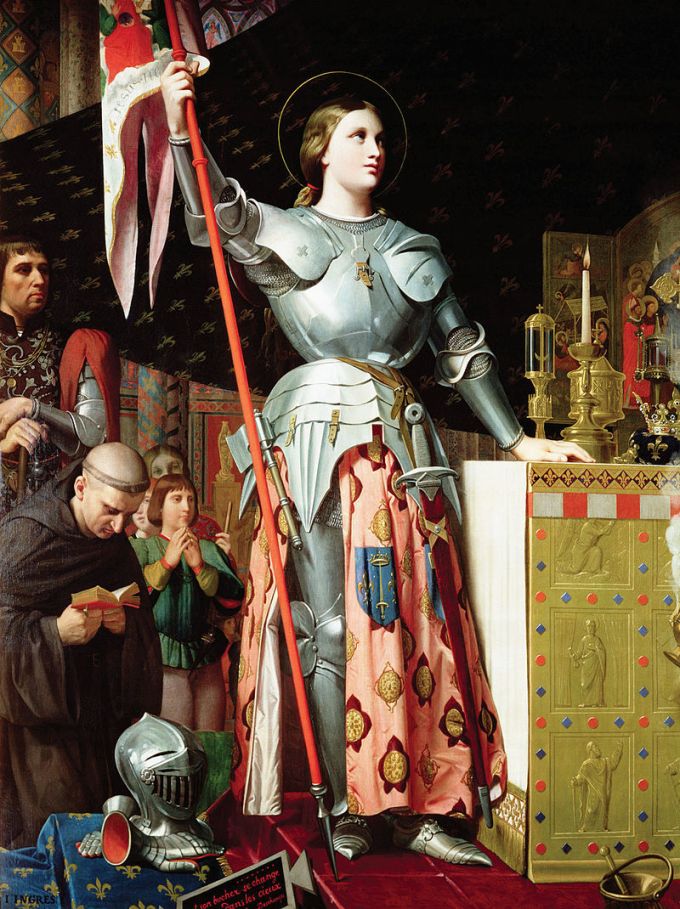
Joan of Arc at the coronation of Charles VII, Painting by Dominique Ingres; Photo from Wikimedia Commons, the free media repository.
Initially, the trial was held in public, but it went private after Joan had continuously won the support of villagers. Frustrated, the tribunal eventually charged her for being dressed like a man in military clothes.
On May 29th, 1431 the tribunal announced that Joan was guilty of heresy, and on May 30th the next day, she was burned at the stake in the marketplace of Rouen before a crowd that is estimated to have been about 1,000 people.
She was canonized to be a saint by the Roman Catholic Church on May 16th, 1920 at St. Peter’s Basilica in the Vatican.
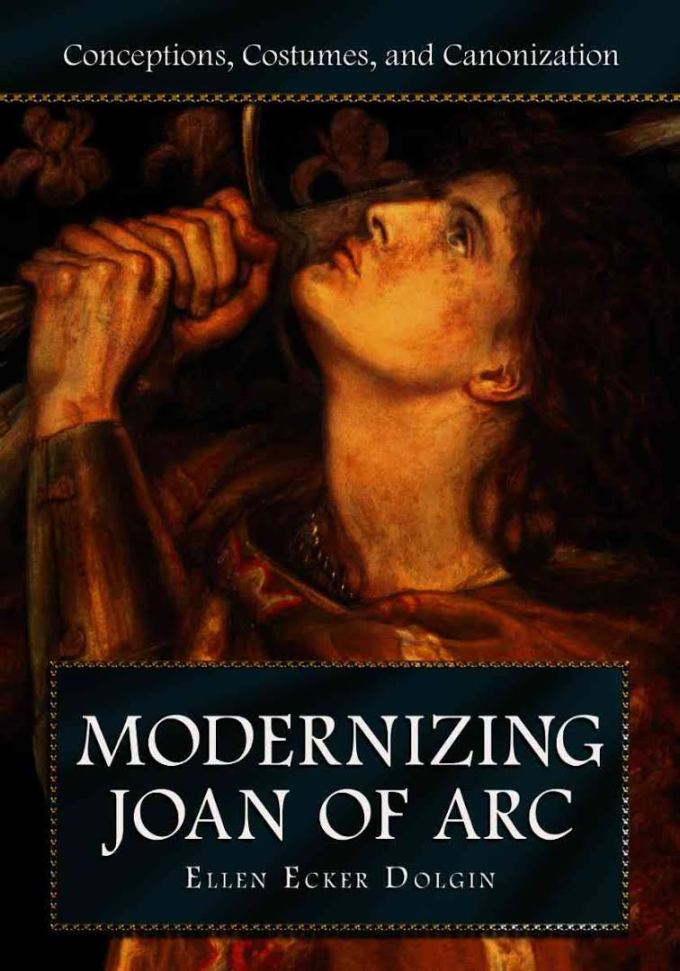
The front cover of Dr. Ellen Dolgin’s book, published in 2008.
Dr. Ellen Dolgin is a professor and head of the English Department at Dominican College. Come to the library to check out her book and learn more about Saint Joan of Arc, as well as other writers and authors who have written about Joan or used her as an inspiration in one of their works.
You can also ask your adviser if you are eligible to be in the “Voices of Authority: Joan of Arc” course that is held by Dr. Dolgin in the Spring semester.



